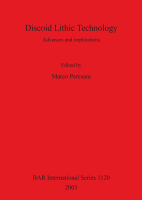Description
BOOK DESCRIPTIONEarly and Middle Palaeolithic studies have recently been greatly improved by the application of modern technological methods. These studies are very much based upon lithic production systems, basically the methods by which ancient peoples made their stone tools, and their relative aspects in terms of culture, environment and economic values. Up until recently many previous studies have been concerned with different flaking methods, and how they have varied. This BAR is about one of these methods known asthe 'discoid flaking method' and follows on from previous studies. There are fifteen papers in this study, nine of which are in French. These articles discuss the discoid assemblages of Europe and its environs, either to outline the main features of discoid lithic tools, or to illustrate the layout of a particular archaeological context, or in order to show the varying levels of technology used by the Palaeolithic peoples who made these tools. The discoid method is not very well known, and is also often unclear in many areas for which it is present. The editor starts by defining exactly what this flaking procedure is, and relates it to previous examples, expecting new information gained from a more scientific approach. The majority of the contributions to this study are focused on newly acquired results either from recent excavations, or from the re-examination of older sites, and how these results relate to the definition of variability of the discoid flaking method. The number of reports in French indicate how France is the central area of study for discoid lithic technology, as well as being the main area of lithic research in general.











